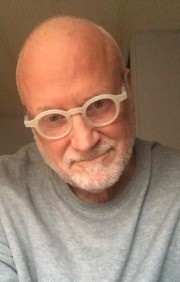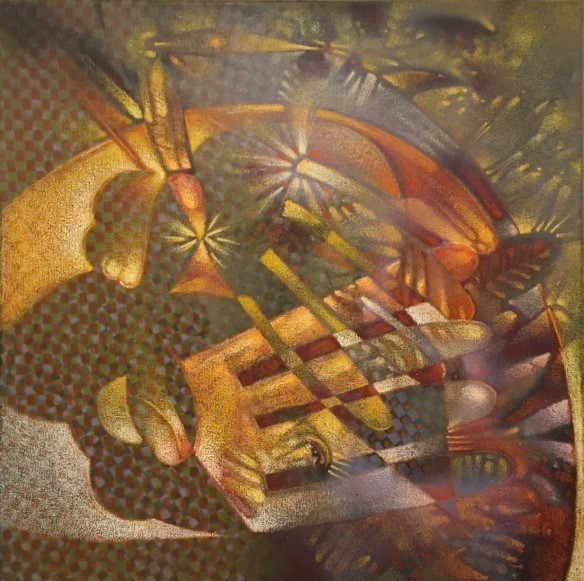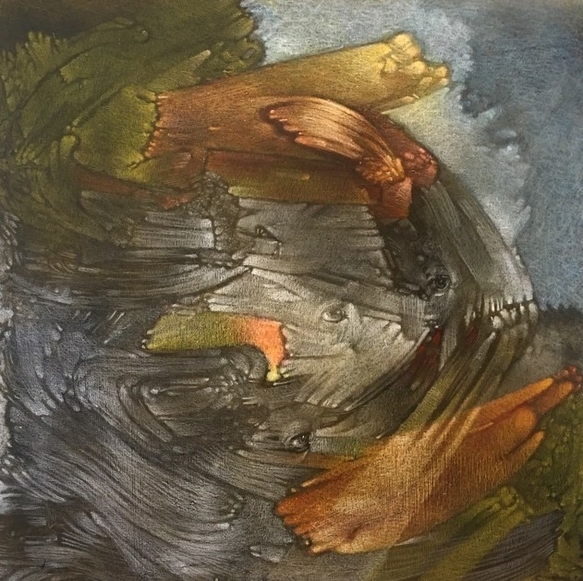In this Featured Member series, AATA celebrates the work of our members. During the coronavirus pandemic, we are inviting members to share their experiences about how their professional and personal lives have changed.
May 15, 2020
 Tell us about yourself
Tell us about yourself
Originally from the heartland of Indiana, I returned to the Midwest to care for aging parents. The decision to enroll in the MAAT program at Saint Mary-of-the-Woods College was founded on my realization that therapists are few and far between in rural areas. Still, I have witnessed effective treatment in therapy averse, rural patients through the availability of trained art therapists. While I have been a practicing artist for 40 years and in therapeutic relationships for 30, I feel that channeling those experiences and insights into another master’s degree was a psychosocial opportunity to serve others while I deepen self-understanding in late adulthood. I look forward to the completion of my MAAT in 2021.
What has changed (or remained the same) in your studies during the COVID-19 global crisis?
My program at SMWC is a hybrid combination of on-site and distance learning. So far this has been a great advantage. We did not have the upheaval of being forced to leave campus and the stiff learning curve that accompanies ad hoc online classes.
Has this crisis caused any delays or disruption in your internship or graduation schedule?
The impact of COVID-19 has been felt deeply during my current internships. The semester began with three sites; juvenile detention, opioid treatment, and in-patient care. The plan was ambitious, well rounded, and demanding but two were cancelled due to COVID-19, even though I found client-therapist alliances forming through art therapy. Fortunately, I was still able to focus on in-patient treatment in a behavioral health facility. We observe every available safety guideline, and I practice self-imposed quarantine outside of the treatment facility like any other essential health care worker.
In what way(s) has your art therapy community supported you through these challenging times?
To keep quarantine from becoming psychosocial distancing, I began service on AATA’s Multicultural Committee. We are exploring the possibility of a digital quilt project that addresses art therapist’s collective disorientation and reorientation because of the pandemic. I was a panelist on a webinar, “COVID-19 Substance Use: When does it become misuse?” hosted by Indiana Minority Health Partners as a part of National Minority Health Month. I am also frequently seen at Art for Peace, conceived in 2001 as a response to 9/11 by Barbara Fish, PhD, HLM, ATR-BC, ATCS, LCPC as a drop-in workshop for art therapists. Dr. Fish has revived Art for Peace as a virtual community workshop for art therapists in a time of psychosocial distancing. We casually Zoom-in, work on our own art, enter into dialogue, or just sit and be with like-minds.
Is there anything else you would like to share with the community during these uncertain times?
My virtual relationships are now entrenched in my redefinition of normal.
Artwork by Jonathan Soard. (Left) “Amygdala #12.” Spray paint, stencils, china markers, on stretched canvas. February 2020. 20X20.” (Right) “Amygdala #26 (Big Fish Syndrome).” House paint, china markers, on stretched canvas. 24X24.” April 2020.
Artist Statement: “I have included two drawings from our time of Corona. I had started art-based research this semester centered around the influence of the amygdala on my actions and reactions. In essence, this series became response art in the context of a global pandemic. In retrospect, I can see the exuberance of the semester transforming into something else. I am remaining engaged in active imagination, carrying on a dialogue with this series. Still, it’s safe to say that the latter feels like the passing of a juggernaut, sweeping up all in its path.”


